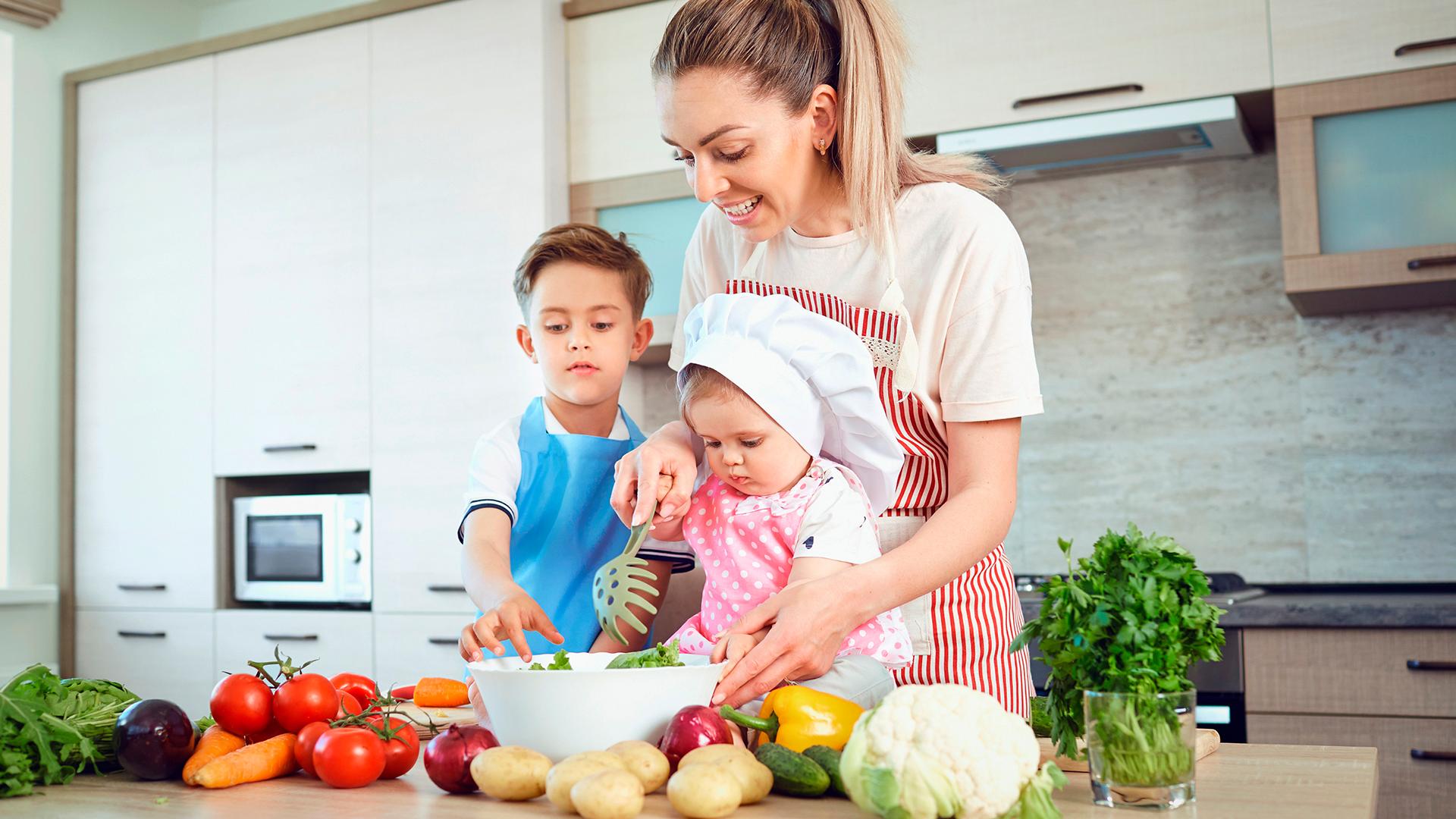It can be extremely frustrating to cook for your child and be met with "I don't like that!". We've put together tips and advice on how you can build your child's love of food and food courage to ensure that you all eat a more varied diet.
What is food courage?
"Food courage" means having the courage to taste new things, to experiment and play with the food, and to handle new flavours and ingredients. The term is especially used for children's food education, which should start as early as possible. Children develop food courage when they are introduced to different foods and experience success when they taste the food - and like it. At shared meals, they support each other and build food courage together, but they also mirror themselves a lot in the adults they eat with. That's why it's important to build food courage the right way from the start.

Prevent pickiness in your child
Pickiness is an issue for many families. As parents, you want your child to have healthy and varied eating habits, but children are independent little beings who often have their own opinions about what should - and shouldn't - be put in their mouths.
Most parents know the frustration of a child not eating a varied diet - and not wanting to try new foods. Maybe the meatball is left untouched and the beans aren't even allowed near the plate. The child clearly shows that the only thing they want to eat is the pasta - possibly covered in ketchup.
Good and varied food is of course important for the well-being and health of the little ones, but food is not just about health and nutrition. Food is also about care, security and belonging. It gives us experiences and enjoyment, stimulates our senses and is often what brings the family together in our everyday life. That's why it's important to focus on more than just food when fighting pickiness in children.
Pickiness is not a disease that needs to be treated, but rather a transitional phase where the child is becoming familiar with their own senses, their own tastes and different foods. This is a natural development that is more challenging for some children than others - and continues throughout life. Patience is therefore also an important part of the process.

How do I get food brave kids?
When it comes to supporting your child in developing a love of food and the courage to try new foods, there are many things you can try. Try it out - not all methods may work in your home. The most important thing is to be patient and not monitor your child during the meals, because eating should be cosy and enjoyable for all of you.
Tips for building food courage in children:
- Let go of the control - As a parent, you feel a great responsibility to ensure that your child eats a healthy and varied diet. Understandably, many parents end up pressurising their children to eat and placing restrictions on what they can't eat. However, all research suggests that pressure and restrictions make children less likely to eat a varied diet and try new foods. Instead, offer a varied selection of healthy food, and trust that your child can control how much and in what order they want to eat.
- Avoid conflicts - A good atmosphere at the table has a big impact on children's desire to eat and try new foods. Tired, overwhelmed children being pulled away from a screen to eat is a quick route to conflict. That's why it's a good idea to prioritise time just before dinner to be present with your children and, for example, tumble in bed, draw a picture or just sit together on the sofa. Also, try to avoid power struggles during mealtime by shifting the focus from the child's plate to your own enjoyment and pleasure in eating.
- Be patient when introducing new foods - It can be a challenge to add variety to mealtimes if your child repeatedly rejects the new dishes you serve. It can be helpful to realise that this is a natural reaction because children like familiar food. In fact, children often need to be introduced to a new dish or food item up to 10 times before they become comfortable eating it. However, the reality is that most parents give up before then. So be patient and talk to your child about the new food being something we practice eating, rather than seeing rejection as a final destination.
- Children eat not only by desire, but also by availability - If the fruit and vegetables aren't cut up and ready to eat, they are more likely to eat something more accessible, such as a biscuit or other processed snacks. Make sure that the food you want your child to eat more of is easily accessible, for example, by setting out a plate of cut fruit and vegetables for them to eat between meals.
- Involve the children when cooking - Evidence suggests that children who are involved in cooking are more interested in tasting the food. Involving children in cooking gives them a sense of ownership and positive experiences with food. However, don't feel defeated if your child still rejects the food or only eats a little bit after being involved in the kitchen, as it can take a long time to get to know new foods.
- Eat with others (use role models) - Children absorb what they see others do. Studies show that children who eat with other children or adults who like different foods than themselves often change their taste preferences. This may happen automatically in the child's institution, but can also occur in other ways, such as inviting the neighbour's food-conscious child to dinner. Parents can also be a role model by talking about how good food tastes - and showing it with their body language.
- Mix new and familiar foods - During the periods of your child's development when they are most resistant to new foods (typically around the age of 3), the ketchup effect can be an effective approach. The term refers to serving new food with a food they know and love, such as mayonnaise with vegetables or bread and butter with soup.
- Experiment with preparation - Preparation has a big impact on whether your child wants to eat certain foods. Just because your child rejects a cooked carrot doesn't mean the same would apply to carrot soup. There is no one-size-fits-all solution on how to prepare food to make your child want to eat it, but a good rule of thumb is to use different textures in the same dish, such as something soft, something creamy and something crunchy and to use three or more of the basic flavours: sour, sweet, bitter, salty and umami.
- Stop using food as a reward - "If you eat your peas, you'll get an ice cream" is a common parenting method that unfortunately is highly ineffective. When food becomes a commodity, it is no longer something you eat for pleasure and fulfilment, but for profit. In the long run, this means that the child will only like the ice cream more and hate the peas more. However, praise or a high-five every now and then, if the child tasted something new, can do wonders.
- Play with the food - This doesn't mean going crazy and throwing potatoes on the floor, but a playful approach can take the focus off what the child is eating, making the eating experience positive and breaking the controlling behaviour of parents. For example, play hungry rabbits munching on vegetables or that you're at a restaurant.
- Packaging is important - Researchers agree that the appearance of food determines how well it is received by young children. Children consistently choose brightly coloured, eye-catching packaging over other foods, so try a fun and colourful packed lunch or use a plate with their favourite cartoon characters on it.


Respect your child's boundaries
Our senses of taste are different. If something is bitter, for some it will just be experienced as a natural flavour variation, while others may find it dominant or even unpleasant. This is also true for children, so if your child feels uncomfortable with a certain type of food after perhaps tasting it a few times, recognise that boundary.
Sources used in the blog post (in Danish):
